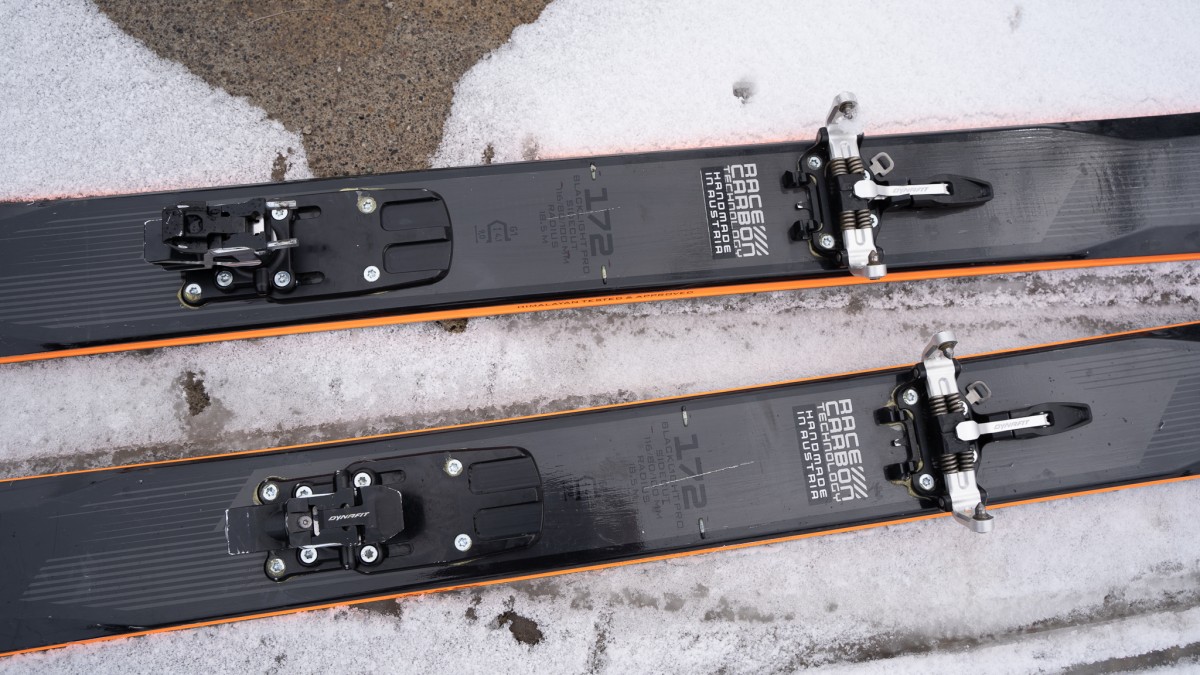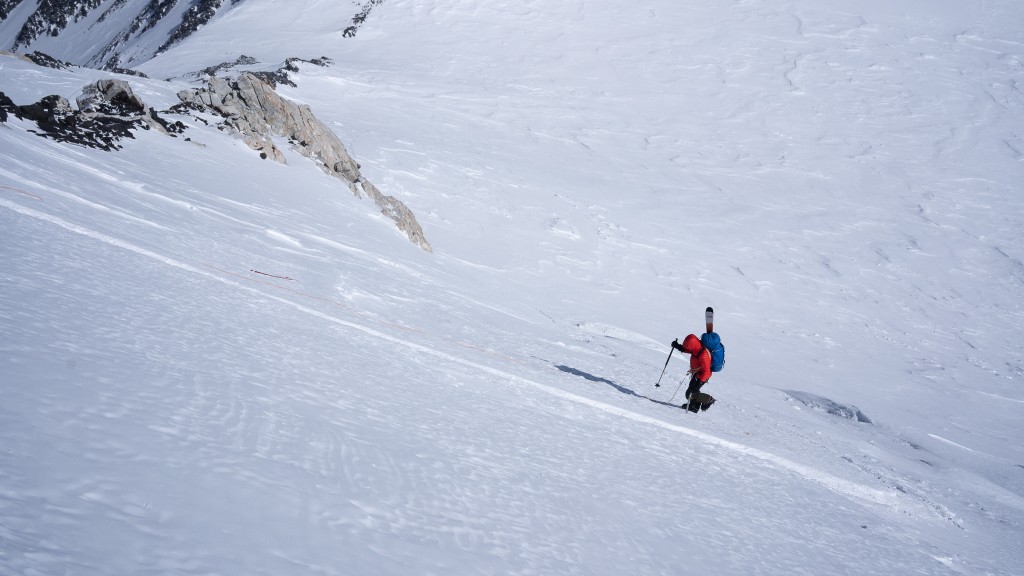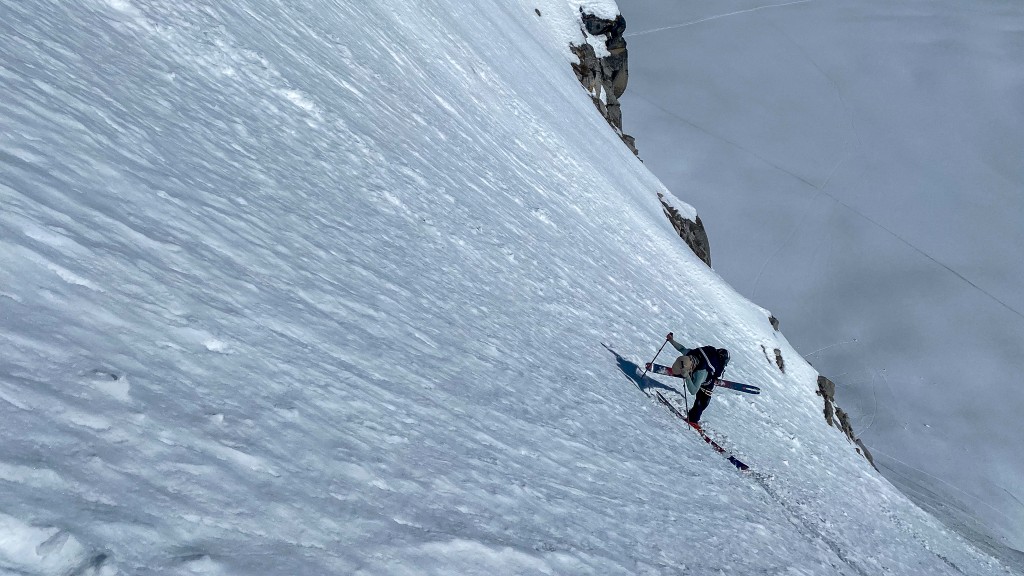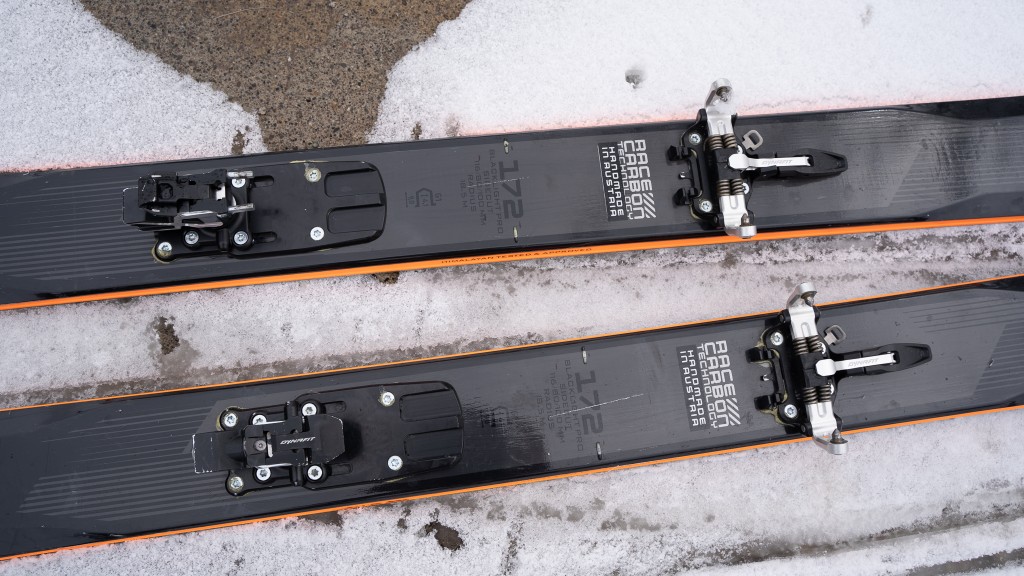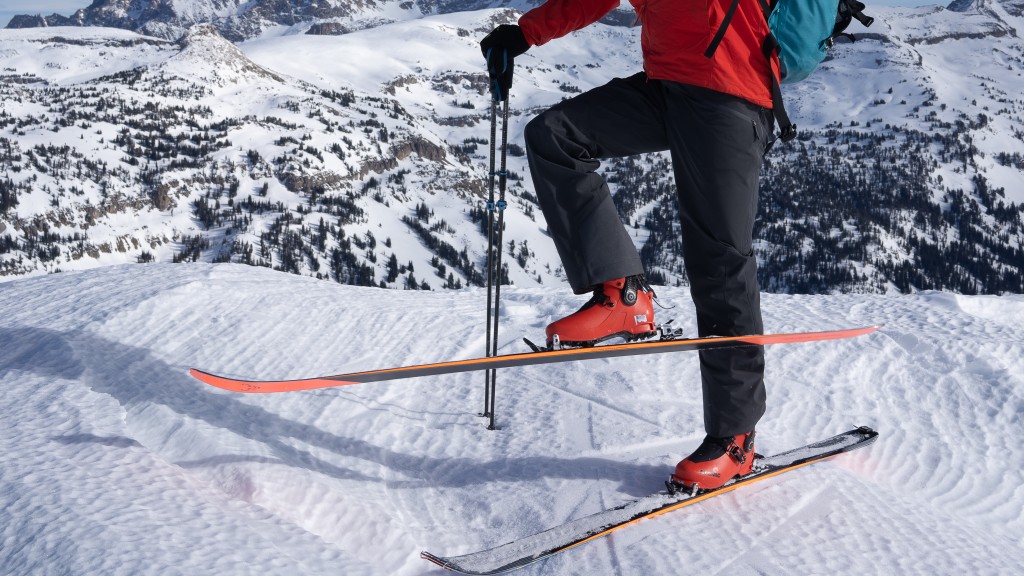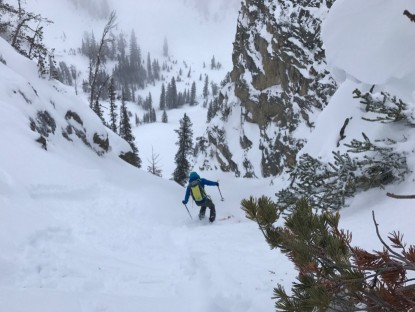Our Verdict
Compare to Similar Products
 This Product
Dynafit Superlite 150 | |||||
|---|---|---|---|---|---|
| Awards | |||||
| Price | $600 List | $700 List $662.99 at Amazon | $800 List $519.96 at Evo | $346.49 at Amazon Compare at 2 sellers | $299.98 at Backcountry Compare at 3 sellers |
Overall Score  |
|||||
| Star Rating | |||||
| Bottom Line | Ultralight bindings with broadly adjustable release values | For the weight, these bindings cram in all the important features in innovative and usable fashion | If you truly need more performance features than this lightweight binding provides, you fall into a tiny sliver of skiers at the hard-charging end of the spectrum | Through all the turmoil, its lineage remains reliable, simple, and affordable | Tours okay and skis downhill very well, it has all the downhill performance and design attributes you seek |
| Rating Categories | Dynafit Superlite 150 | Black Diamond ATK R... | Atomic Backland Tour | Dynafit Speed Turn | Marker Duke PT 12 |
| Weight (35%) | |||||
| Downhill Performance (25%) | |||||
| Touring Performance (20%) | |||||
| Ease of Use (15%) | |||||
| Durability (5%) | |||||
| Specs | Dynafit Superlite 150 | Black Diamond ATK R... | Atomic Backland Tour | Dynafit Speed Turn | Marker Duke PT 12 |
| Weight (pounds for pair) | 0.79 | 1.61 | 1.26 | 1.63 | 5.38 |
| Weight of one binding and screws. Lightest possible configuration w/o brakes (in grams) | 179 | 366 | 286 | 370 | 1219 |
| Weight of 2 bindings Multiple options are noted where we have tested multiple options. (in grams) | 358. 492 with adjustment plate | 732 | 572. 770 with brakes | 740 | 2438 |
| Release value range | 4 to 13 | 5 to 12 | Men, "Women", "Expert" | 4 to 10 | 4 to 12 |
| Stack height: average of toe and heel pin height (in mm) | 36 | 37 | 37 | 38 | 42 |
| Toe/heel delta: difference in height between heel pins and toe pins (in mm) | 10 | 12 | 10 | 17 | 14 |
| Brakes? | Optional | Yes | Optional | No | Integrated |
| Brake width options | 75, 90, 105 mm | 86, 91, 97, 102, 108, 120 mm | 80, 90, 100, 110, 120 mm | N/a | 100, 125 mm |
| ISO/DIN Certified? | No | No | No | No | Yes |
| Ski Crampon compatible? | Yes. "Standard" style. Not all crampons will be cross-compatible | Yes. "Standard" style. Not all crampons will be cross-compatible | Yes. "Standard" style. Not all crampons will be cross-compatible | Yes. "Standard" style. Not all crampons will be cross-compatible | Yes. Marker Duke PT specific. |
Our Analysis and Test Results
The Dynafit Superlite 150 is the latest in a string of Dynafit bindings built for the discerning, high end user that wants optimal weight savings but downhill ski performance attributes greater than those provided by skimo race bindings. If skimo race bindings underwhelm you for some reason, mainly in downhill performance, the Superlite 150 has got to be on your short list. With aftermarket add-ons to increase functionality, or the option to strip down to bare minimalism, skiers of all stripes will find a use for the Superlite 150.
Performance Comparison
Weight
The Dynafit Superlite 150 weighs 179 grams. That is the weight for one binding, including the mounting screws. Without the mounting screws it is much closer to the claimed 150 grams, but that number is meaningless. Every binding needs screws to mount it. Across the board we measure and report binding weights with screws included.
In the lower reaches of ski binding weight categories, weight is directly related to functionality. For a given suite of functions, bindings from different manufacturers are really close in weight. Around 100 gram is go-fast, race-only skimo bindings. Around 150 grams you will find sturdy skimo race bindings with one heel lifter and no adjustments for length or release. Around 175 grams there are a couple options like the Superlite 150 that have adjustable release. Bump up to 250 grams and you get length adjustment. The lightest bindings to get brakes are at 300 grams, but it jumps up from there before brakes are common. Add-on accessories for the Dynafit Superlite 150 match these weight points. There is an adjustment plate (that we tested too) that gets the weight to 251 grams. Dynafit Superlite brakes bump things up to nearly 350 grams.
Downhill Performance
We look at downhill performance in two different ways. First, let us look at performance during routine skiing (as opposed to looking at release characteristics). In this regard, the Superlite 150 from Dynafit isn't that different from base level skimo race bindings. You need to add a bunch of weight to get a model with lateral elasticity or longitudinal "forward pressure", both of which add theoretical advantages in downhill skiing.
What about releasing? First, the Dynafit Superlite 150 has release characteristics but that release is not certified by a third party. Next, that release is widely adjustable. A release value range of 4-13 is unheard of on such lightweight bindings. Those numbers are not verified by third party certification, but "on paper" this is great. Lastly, ski brakes? As tested, the Dynafit Superlite 150 has no brakes. The add-on ski brakes will likely bump the weight by about 100 grams, bringing it into the same weight range as other bindings with brakes.
Touring Performance
These tour well. The toe piece offers limitless range of motion. The heel piece provides three levels of heel elevation. The two parts are relatively small and clean, thereby reducing icing potential. Lightweight bindings that collect ice while touring aren't actually all that "light". Your touring experience will be heavier for the collected snow and ice. This is the case for bindings, skis, crampons, ski poles, even your ski pants.
Let's look more closely at the heel elevations. The three different levels are pretty evenly spaced from one another. This is a good thing. On the other hand, though, switching between any of them requires spinning the heel piece. There is no way to do this real easily with a ski pole. If you know you need all three heel levels and don't have the mobility or coordination to repeatedly and efficiently bend down to change them, upgrading to a slightly heavier binding with easier to change heel elevations is worthwhile.
Ease of Use
We sort of touched on some ease of use criteria above. Specifically, we have already covered transitions between heel lifters in tour mode. What about the other transitions? Switching between uphill and downhill mode with the Dynafit Superlite 150 is about the same as with other lightweight bindings. We like that the touring mode flap that covers the heel pins to form the middle heel riser switches with no resistance between tour and ski mode.
Getting in and out of the Dynafit Superlite 150 is average. Adjusting the release value is fairly typical also. The option to add adjustment plate and brakes to your Superlites is nice. We can see skiers with a quiver choosing the basic Superlite 150 for all their skis. Some skis will then get adjustment plates while others might get brakes or brakes and adjustment plates. This way one gets accustomed to one basic form but has the option to configure different skis for different use cases.
Durability
The Dynafit Superlite 150 is mainly metal in construction and draws on Dynafit's decades of binding design and construction. We had no issues with their durability and know of no such issues. Tech bindings, in general, are quite durable. Dynafit in particular has been making bindings for decades, and some of those earliest products are still in action. Wear points are minimal, moving parts are reduced to the bare minimum, and sturdy materials are used where necessary.
AT ski bindings are remarkably durable. Especially given the gossamer weight of some options, we don't let much time go by without appreciating just how robust simple and proven engineering can be. It is hard to imagine the lightweight touring binding getting much better, in any major way, than it has been for 20 years and more.
Should you buy the Dynafit Superlite 150?
Yes. These are the "sweet spot" for lightweight touring bindings. The robust construction and adjustable release value broaden the appeal while the weight is competitive with the lightest options on the market. The customizable options (adjustment plate, brakes) further broaden the potential user base. It is hard to imagine a backcountry skier that couldn't configure a pair of Dynafit Superlite 150 for their particular use case.
What Other AT Bindings Should You Consider?
If everything we say about the Dynafit Superlite 150 speaks to you but you cannot find them, we can heartily endorse the ATK Haute Route 10 as a low-compromise second choice. If you like the Haute Route 10 or Dynafit Superlite 150 but want brakes, the ATK Crest 10 is the lightest binding we recommend for ski touring that also has brakes. Yes, the Dynafit Superlite 150 can be configured with brakes. We did not test them and those of the Crest 10 are integrated from the very initial design of the binding. Superlite's brakes are an add-on with the drawbacks associated. We have to continue to test both the Superlite and Crest. Given what we have seen so far, the Superlite edges ahead overall. However, it is conceivable that we might learn things in the future that flip that script.


